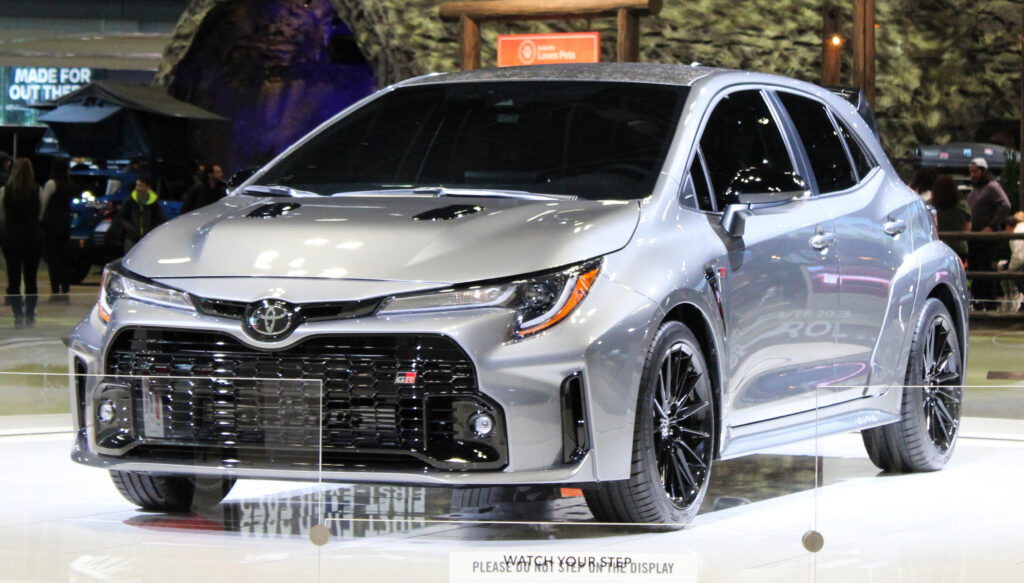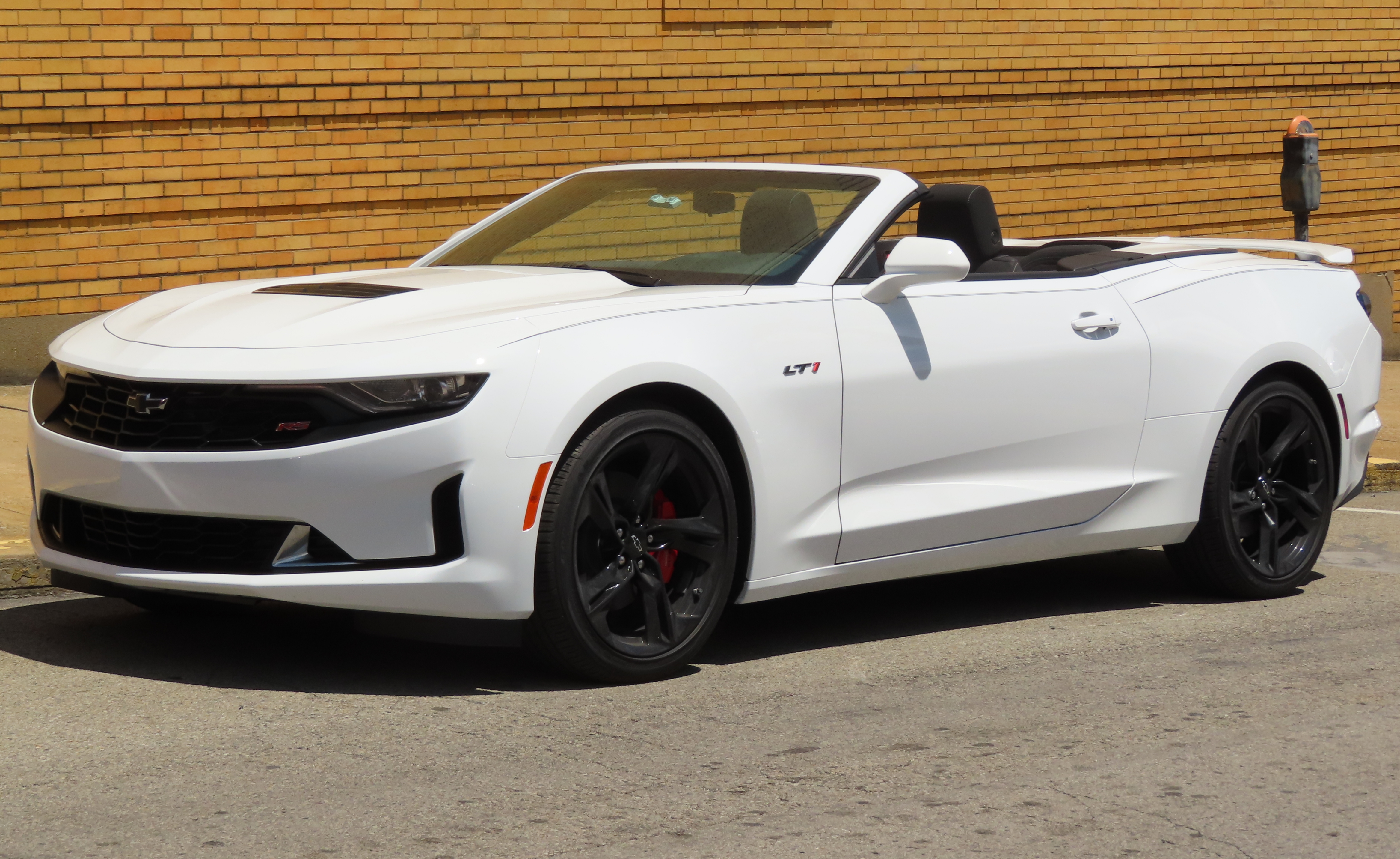You’re cruising home in your brand-new Toyota GR Corolla, the thrill of the drive coursing through your veins as you navigate the open road. The manual transmission is a dance you’ve mastered, or so you thought. But in a split-second lapse of concentration, you miss a gear, and suddenly, you’re faced with a catastrophic engine failure and a repair bill that exceeds the price of your car. This is not a hypothetical scenario but the unfortunate reality for one GR Corolla owner, whose mishap has sparked a flurry of discussions about the risks of manual transmissions and the responsibilities of car manufacturers.
The High-Stakes Game of a Money Shift
The incident in question involves a 2024 GR Corolla owner, Charlie Holmblad, who during his commute home, mistakenly downshifted to third gear instead of upshifting to fifth. The result? The car’s engine revved to a staggering 8,900 rpm, well beyond the redline of 6,500 rpm. The aftermath was grim: bent valves, metal shavings in the oil, and a melted piston. The dealer’s diagnosis was clear, and the prognosis was expensive—a whopping $42,180 for repairs, a figure that stands tall against the car’s starting price of $41,515.
The term ‘money shift’ is not new to car enthusiasts. It refers to a botched shift, typically an upshift, that occurs at or beyond the engine’s redline, leading to severe mechanical damage. It’s a term that’s earned its name because, as seen in this case, the financial repercussions are significant. The redline is set for a reason; it’s the safe operating limit of the engine. Cross it, and you’re playing a high-stakes game with your car’s internals.

The owner’s plight is compounded by the fact that the vehicle had less than 500 miles on the odometer. Toyota’s decision not to cover the damage under warranty, while understandable given the nature of the error, has sparked debate. The owner points out that similar instances in the past have been covered, raising questions about consistency and customer support. As he continues discussions with Toyota representatives, the car community watches on, pondering the implications of such a costly mistake.
The repair bill is not just a number; it’s a stark reminder of the potential consequences of driving a manual transmission vehicle. While many enthusiasts champion the ‘save the manuals’ cause, this incident serves as a cautionary tale. The GR Corolla, with its 1.6-litre turbocharged three-cylinder engine—the most powerful production three-cylinder to date—is a marvel of engineering. But with great power comes great responsibility, and in this case, a significant financial risk.
The story of this GR Corolla is not just about a single unfortunate event. It’s a narrative that intertwines the thrill of manual driving, the intricacies of modern automotive engineering, and the sobering reality of human error. As we delve deeper into the details of this incident, we’ll explore the technical aspects of what went wrong, the financial implications for the owner, and the broader conversation about the place of manual transmissions in today’s automotive landscape.
In the following sections, we’ll dissect the anatomy of a money shift, examine the costs associated with such a mishap, and consider the role of car manufacturers in supporting their customers when things go awry. We’ll also look at the broader context of driving safety and responsibility, drawing parallels with recent traffic fatality statistics that underscore the importance of attentive and cautious driving. So buckle up, as we shift gears into an in-depth exploration of a gear-shifting blunder that’s made headlines and stirred the pot in the car community.
The Implications of Money Shifting for Car Owners and Manufacturers
The tale of Charlie Holmblad and his Toyota GR Corolla is a stark reminder of the risks associated with manual transmissions, particularly for those unaccustomed to the demands of high-performance vehicles. The phenomenon of money shifting is not exclusive to novice drivers; even seasoned veterans can fall prey to this costly error. It’s a momentary lapse that can have long-lasting financial repercussions, and it raises several questions about the responsibilities of car owners and the role of manufacturers in such scenarios.
For car owners, the incident underscores the importance of understanding the mechanics of their vehicles, especially when it comes to high-powered machines like the GR Corolla. The manual transmission, while offering a more engaging driving experience, demands a level of skill and attention that cannot be compromised. The consequences of not adhering to this can be dire, as evidenced by the extensive damage to Holmblad’s car. The repair costs, which eclipse the price of the car itself, are a sobering reminder that with the thrill of control comes the weight of responsibility.
The financial burden of a money shift is not to be taken lightly. For Holmblad, the repair quote of $42,180 is a daunting figure. It’s a sum that could potentially outweigh the benefits of owning a manual transmission vehicle for some. This incident may cause potential buyers to reconsider their options, possibly favoring automatic transmissions that, while less engaging, present fewer risks of such expensive errors.
Car manufacturers, on the other hand, are faced with their own set of implications. Toyota’s decision not to cover the damage under warranty is understandable from a business standpoint, as warranties typically do not cover damages resulting from user error. However, the consistency of this policy is called into question when considering past instances where similar damages were reportedly covered. This inconsistency can lead to customer dissatisfaction and a potential loss of trust in the brand.

The high cost of repairs for the GR Corolla raises questions about the pricing of replacement parts and labor. The breakdown of costs provided to Holmblad, with the short block assembly priced at $5,483.45 and the cylinder head at $2,297.97, among other parts, suggests a premium on these components. While it’s expected that specialized parts for high-performance vehicles will carry a higher price tag, the total estimate being more than the car’s MSRP is alarming and may warrant a closer look at pricing structures.
The implications extend beyond the individual case of Holmblad and his GR Corolla. This story has the potential to influence public perception of manual transmissions and the associated risks. It could also impact the future design and marketing strategies of car manufacturers, who may need to consider additional safety features or warning systems to prevent such incidents. The balance between preserving the ‘save the manuals’ ethos and ensuring customer safety is delicate and requires careful navigation by manufacturers.
In light of the recent traffic fatality statistics from Washington, the conversation around driving safety and responsibility becomes even more pertinent. With 810 traffic deaths reported in 2023, the highest since 1990, the emphasis on safe driving practices cannot be overstated. While a money shift is not directly comparable to the high-risk behaviors cited in the report, such as driving under the influence or speeding, it does fall under the umbrella of preventable incidents. The report’s statement that ‘the single most important safety feature of any vehicle is the driver’ resonates strongly in the context of the GR Corolla incident.
The case of the money-shifted GR Corolla serves as a cautionary tale that resonates with all drivers, not just those behind the wheel of a manual. It’s a reminder that vigilance and respect for the capabilities and limits of our vehicles are paramount. As we navigate the roads, whether they be the bustling streets of a city or the winding lanes of the countryside, let us remember the lessons learned from Holmblad’s experience. Let’s drive with care, with an awareness of the consequences of our actions, and with a commitment to safety that extends beyond ourselves to our fellow travelers on this journey we call life.
While the allure of the manual transmission and the thrill it provides will always have its devotees, it’s crucial that we don’t let our enthusiasm override our judgment. The cost of a money shift is high, not just in monetary terms, but also in the potential impact on our lives and those around us. Let’s shift our focus to driving safely, preserving not just our beloved cars, but also the precious cargo they carry – ourselves and our loved ones.
Related posts:
Money-Shifting A Toyota GR Corolla Did $42,000 in Damage: Report
New Toyota GR Corolla Owner Money Shifts His Way To $42k Repair Bill, Warranty Denied
Money Shifting A Toyota GR Corolla Could Cost You $42k





